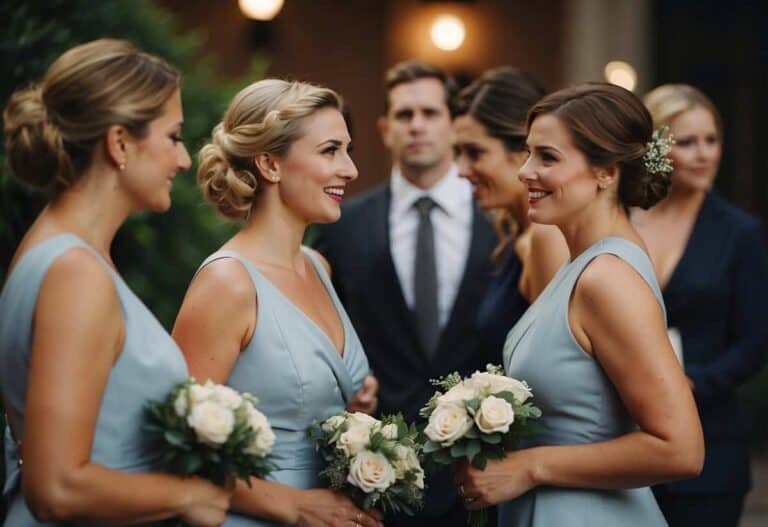Tips for Wedding Dress Shopping: Finding Your Dream Gown
Picking out your wedding dress is one of the most memorable parts of planning your big day. It’s a chance to find a gown that makes you feel beautiful and matches the vision you have for your wedding. Your dress sets the tone for your wedding and reflects your personal style.
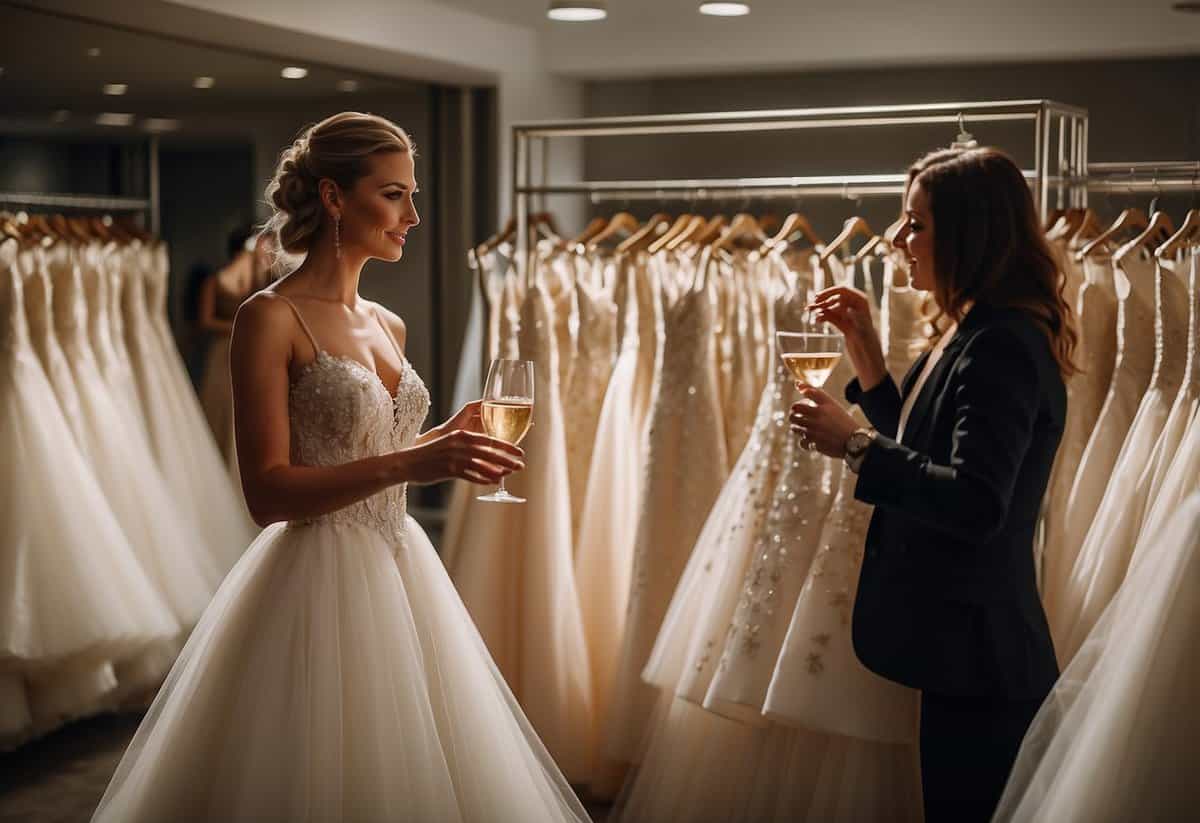
It’s easy to feel overwhelmed with so many styles and options available. This article will guide you through helpful tips to make your wedding dress shopping experience enjoyable and stress-free.
1) Start Shopping Early
It’s a good idea to start looking for your wedding dress as early as possible. Many experts suggest beginning your search about a year before your wedding day. This gives you plenty of time to explore different styles and find the dress that feels just right for you.
Starting early also helps to manage any potential delays. Dresses often take months to arrive, especially if they are custom-made. By starting your search early, you reduce the stress of last-minute issues. Plus, you’ll have time for necessary alterations to ensure a perfect fit.
You’ll also have more options to choose from. The sooner you start shopping, the more likely you are to find a dress you absolutely love. So, mark your calendar and set a date to begin your exciting wedding dress journey!
2) Know Your Budget

Before you start shopping for your wedding dress, set a clear budget. This helps you stay focused and avoid overspending.
Allocate about 6% of your total wedding budget to your gown. For example, if your wedding budget is $20,000, consider spending around $1,200 on your dress.
Don’t forget to include alterations, accessories, and taxes in your budget. These costs can add up quickly. Knowing your budget will make dress shopping much smoother and more enjoyable.
3) Research Styles
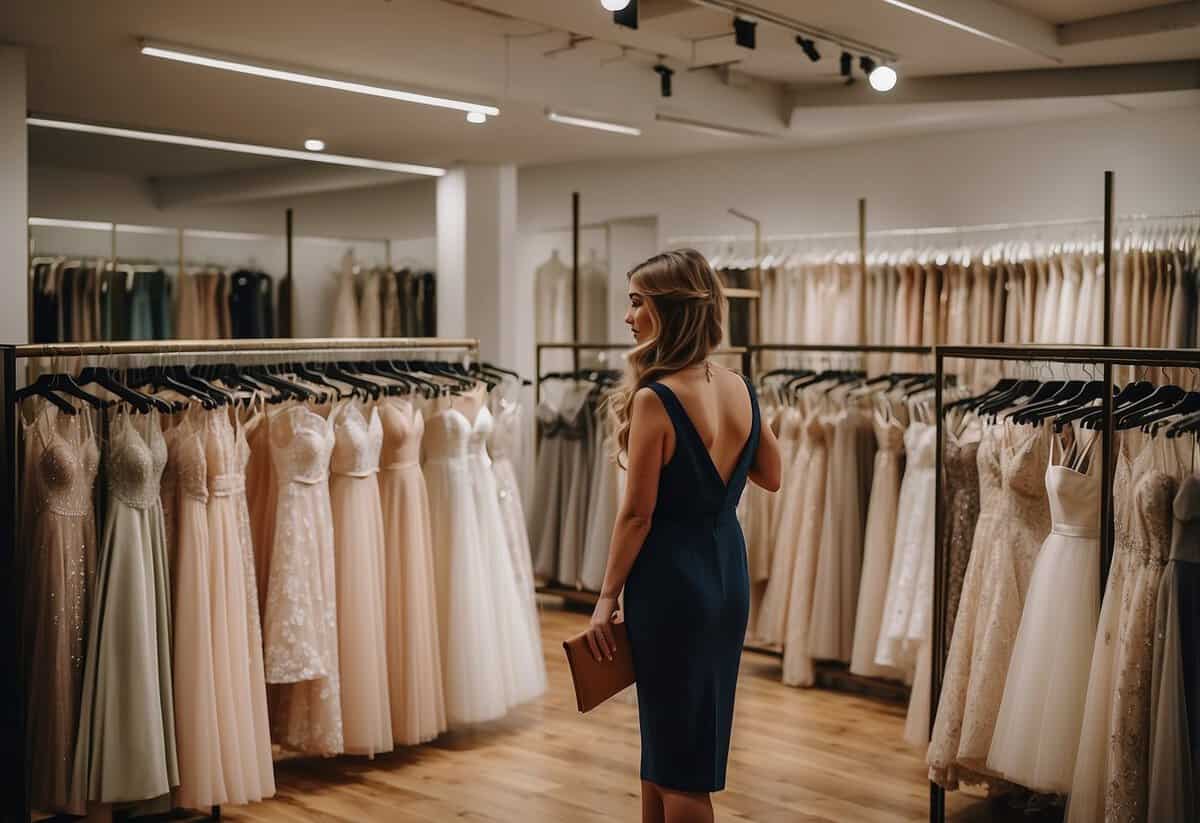
Begin by looking at different wedding dress styles. Browse bridal magazines, websites, and Pinterest.
Save pictures of dresses you like.
Notice patterns. Are you drawn to lace, satin, or beaded gowns? Do you prefer long sleeves, strapless, or something off-the-shoulder?
Visit bridal stores online. Look at the descriptions of dresses that catch your eye.
Pay attention to terms like A-line, ball gown, mermaid, and sheath.
Don’t hesitate to ask friends about their wedding dress shopping experiences.
They might have valuable tips and insights.
Lastly, take a style quiz. Some bridal websites offer quizzes to help match your tastes with specific styles.
This can simplify your search and make your appointments more focused.
4) Consider the Season
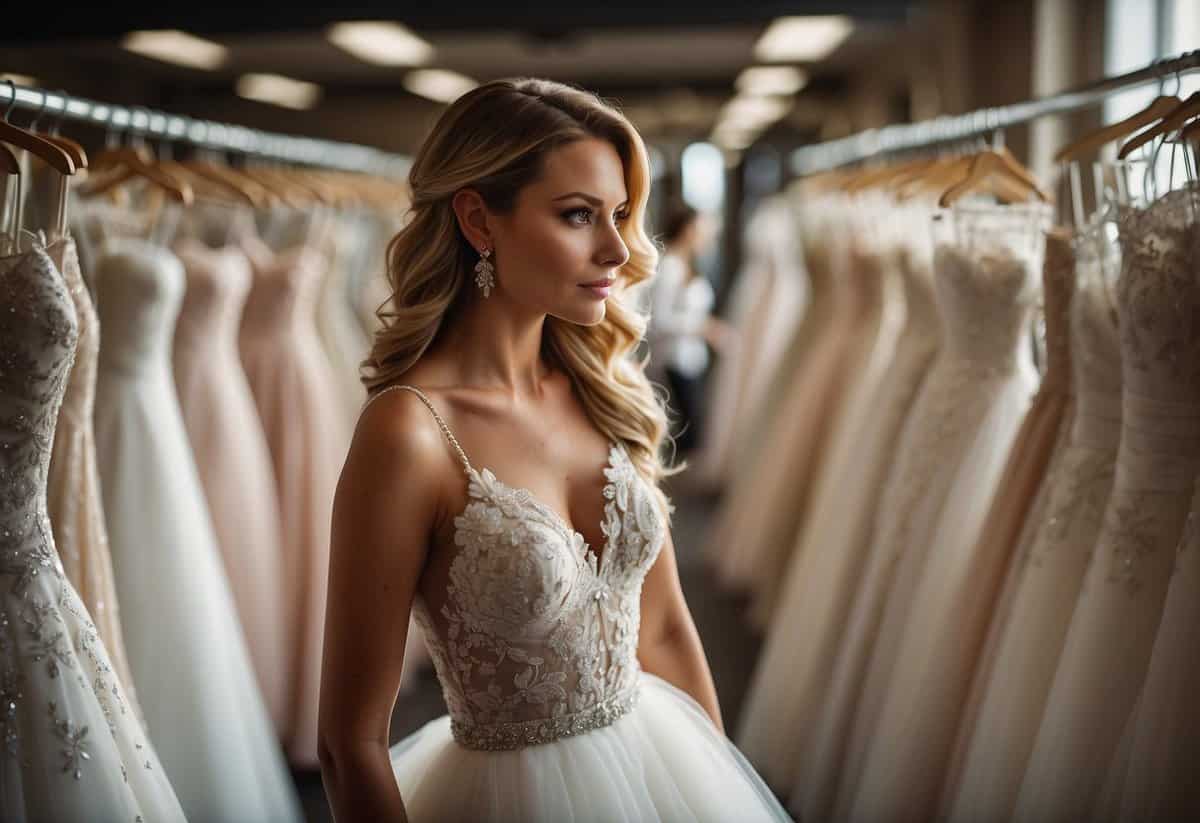
The season of your wedding plays a big role in choosing the perfect dress. You want to feel comfortable and look stunning, no matter the weather.
For a summer wedding, think about lightweight fabrics like chiffon or organza. These materials help you stay cool and feel light as you move.
Winter weddings call for more warmth. Look for dresses with heavier fabrics like satin or velvet. Long sleeves can also add both warmth and elegance.
A spring or fall wedding gives you more flexibility. Lace details and medium-weight fabrics work well in these transitional seasons. You might also consider layering options like a stylish shawl or jacket.
Always remember to match your dress to the season to ensure you feel your best on your big day.
5) Bring A Trusted Friend
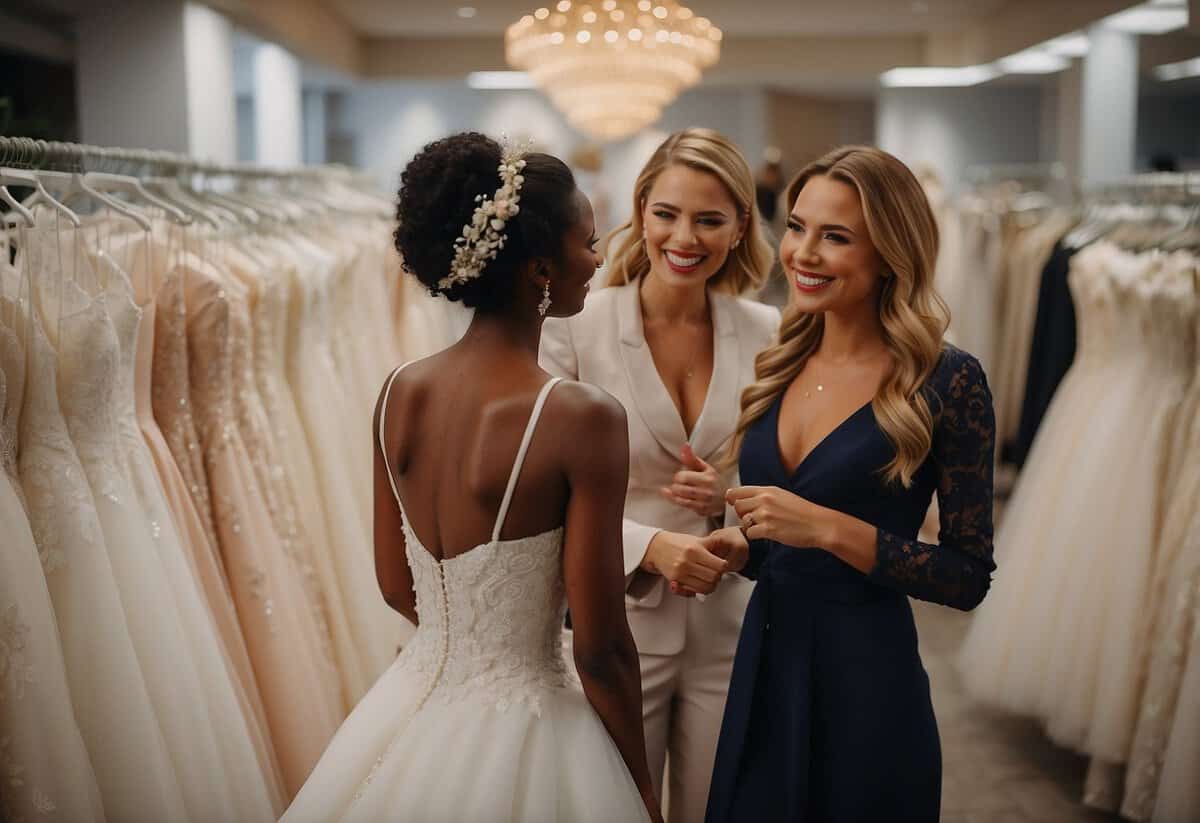
When you go wedding dress shopping, make sure to bring a friend you trust.
Having someone with you can provide valuable support. They can offer honest opinions and help you feel more comfortable.
Choose someone who understands your style and vision for the wedding. This will help them give feedback that aligns with what you want.
Bringing a trusted friend can also make the experience more fun and less stressful. They can help you stay positive and remind you to enjoy the process.
6) Keep An Open Mind
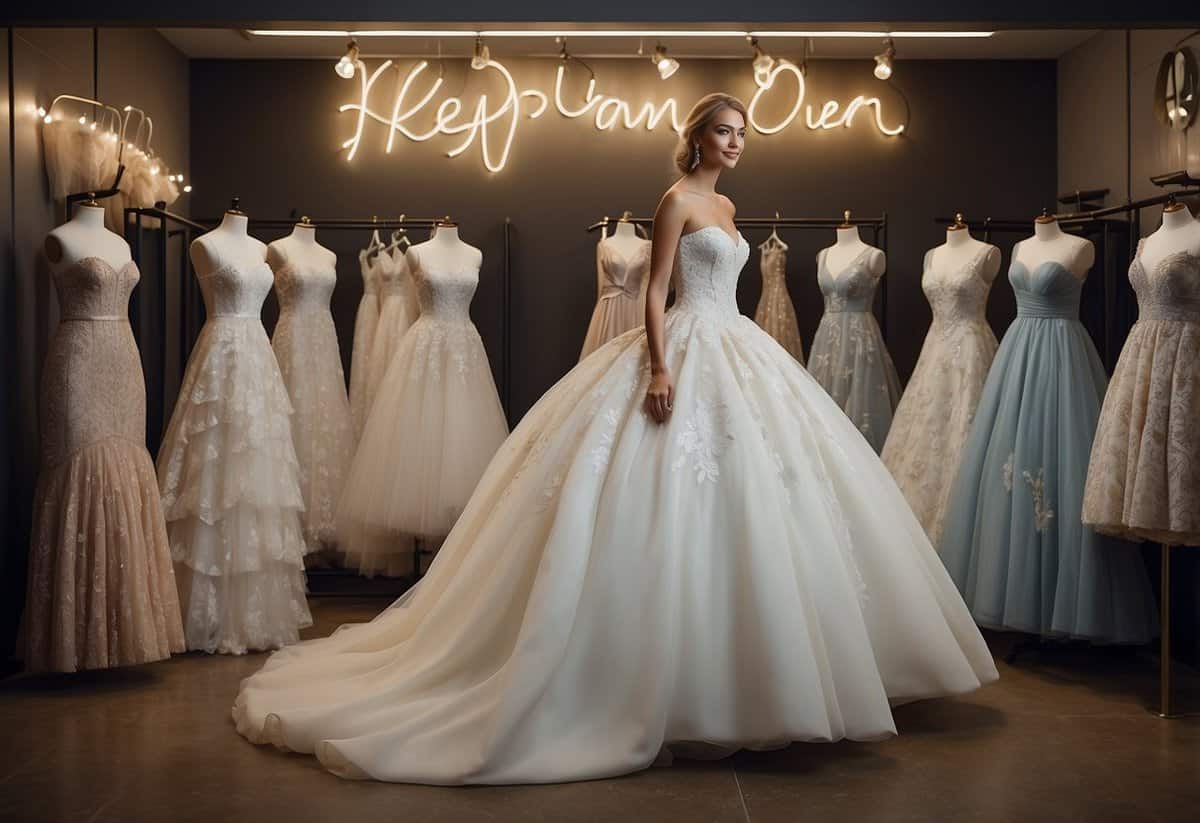
When shopping for your wedding dress, it’s important to keep an open mind. You might have a specific style in your head, but be willing to try on different styles.
Many brides find that the dress they fall in love with is nothing like what they imagined. Sometimes, a gown might look different on the hanger than when you put it on.
Bringing a small group of trusted friends or family can help. Their opinions can help you see things you might miss. Remember, the goal is to find the dress that makes you feel amazing.
7) Limit Your Entourage
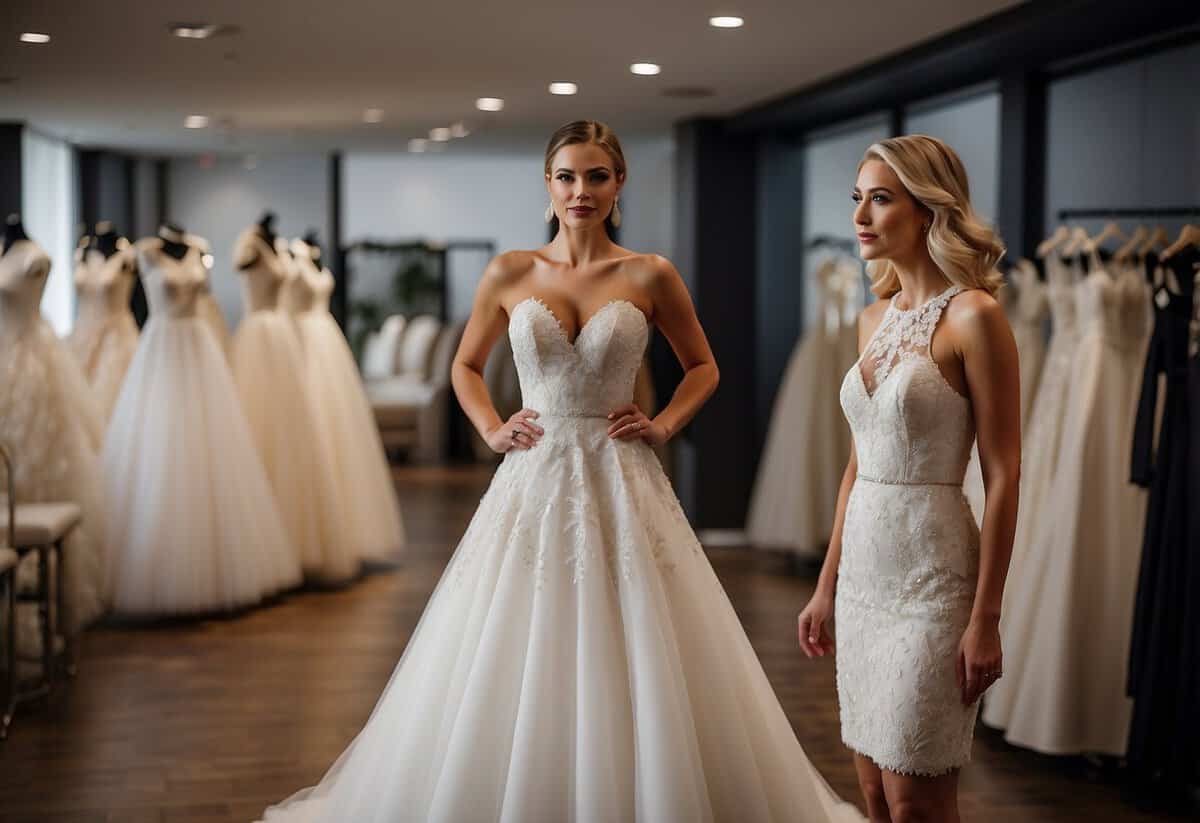
When you go wedding dress shopping, picking your entourage is super important.
Bringing too many people can add stress and confusion. Different opinions can make it harder for you to decide.
Try to invite no more than two or three close people. Choose those who understand your style and will support your choices.
Keeping your group small can make the experience more enjoyable and focused.
8) Think About Your Venue
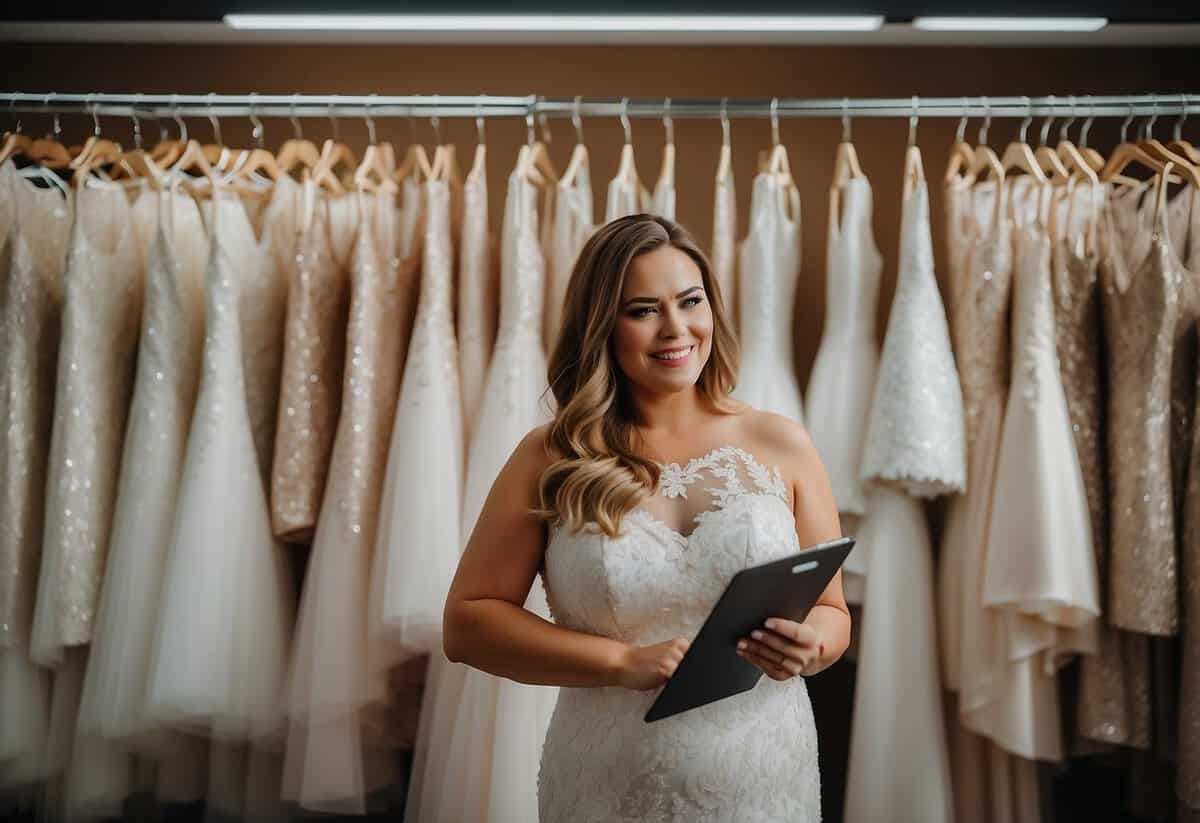
Your wedding venue plays a big role in choosing your dress.
A beach wedding might call for a lightweight, flowy gown. A grand ballroom might need a more formal, elegant dress.
Outdoor settings like gardens or barns might suit a bohemian or rustic style. Think about how your dress will look and feel in your chosen venue.
Matching your dress to the venue helps create a harmonious look and feel for your special day.
9) Understand Dress Codes
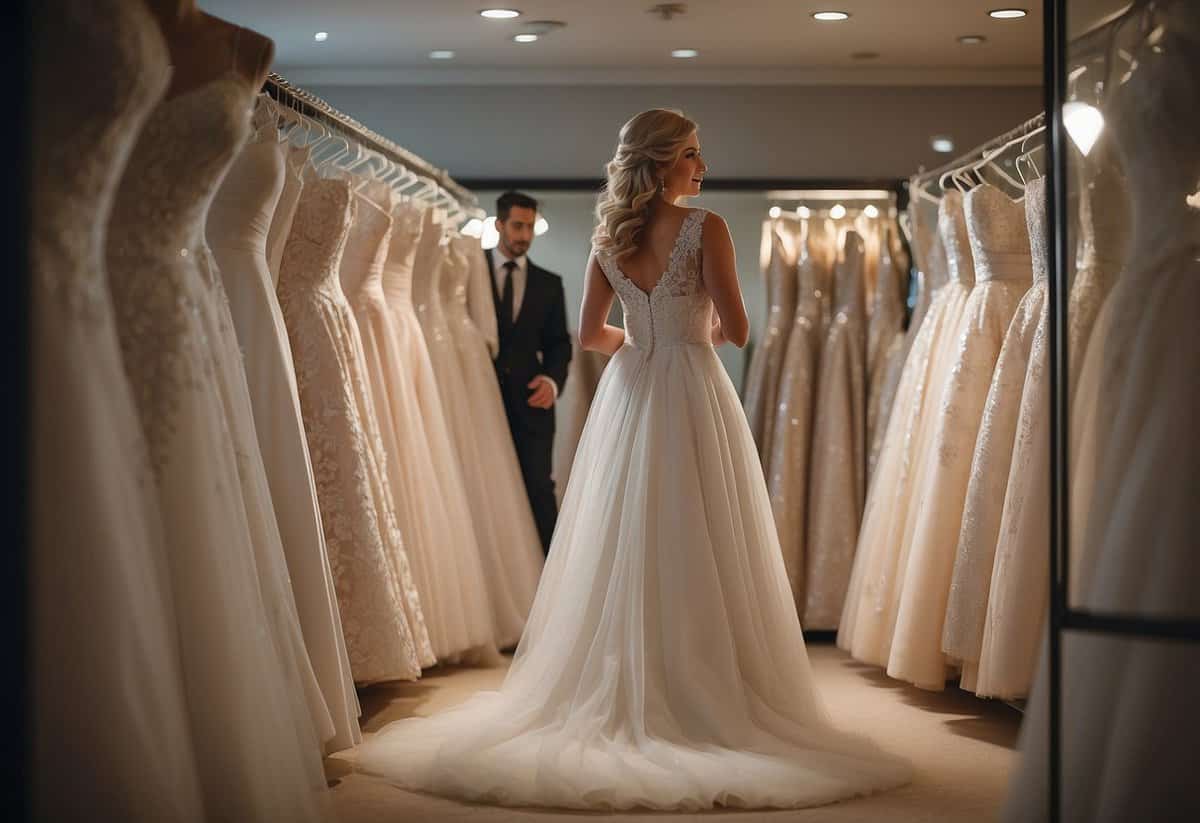
Knowing the dress code for a wedding is crucial. Dress codes can vary from black-tie to casual, and what you wear needs to fit the occasion. This will help you avoid any embarrassing moments and ensure you look appropriate for the event.
For a black-tie wedding, think formal and elegant. Men should wear a tuxedo, and women should opt for floor-length gowns. Semi-formal dress codes allow for cocktail dresses and suits.
If the dress code is casual, you have more flexibility. Men can wear dress pants with a nice shirt, while women can choose sundresses or skirts. Always check the invitation for hints about the dress code. It’s also a good idea to ask the couple if you’re unsure.
Understanding these guidelines will help you choose a wedding dress that fits the atmosphere of your big day.
10) Plan for Alterations
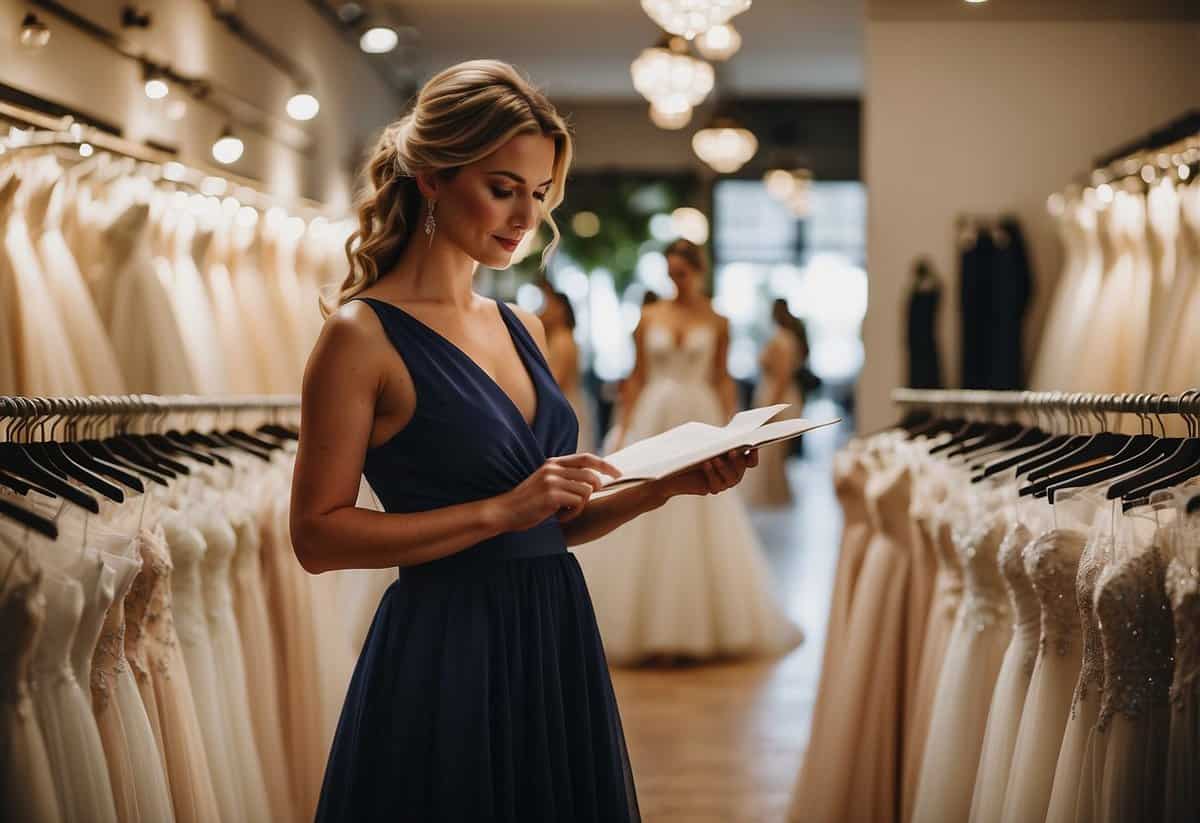
Every wedding dress needs some alterations to get the perfect fit. When you buy your dress, remember to include the cost and time for alterations in your budget and timeline.
Alterations can cost anywhere from $200 to $700. The final cost depends on the dress’s fabric, detailing, and any changes you want, like adding sleeves or modifying the neckline.
Your first fitting appointment will take the longest, about an hour on average. Make sure you plan enough time for at least two or three fittings. Starting early ensures you won’t feel rushed as the big day approaches.
Understanding Different Wedding Dress Styles
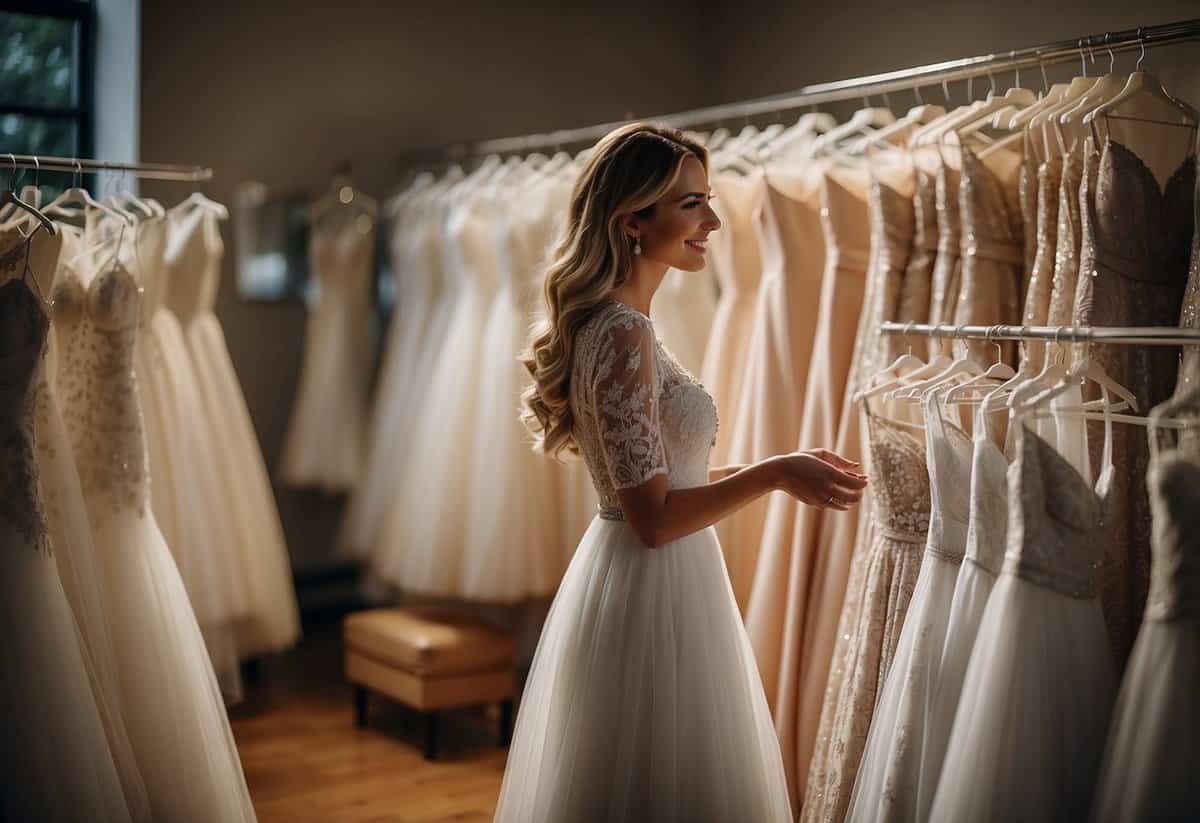
When choosing a wedding dress, it’s important to think about the shape and design that best suits your body and personal style. Each dress style offers a unique look and feel, helping you make your special day unforgettable.
A-Line Wedding Dresses
A-Line wedding dresses are known for their classic and timeless shape. The dress is fitted at the top and gradually widens toward the hem, resembling the shape of the letter “A.”
This style is versatile and works well for many body types. The gradual flare can help to create a balanced silhouette. It can accentuate the waist while providing comfort and ease of movement.
A-Line dresses can be made from a variety of fabrics, including satin, lace, and tulle. Whether your wedding is formal or casual, this style can be adapted to fit the occasion. You can find A-Line dresses with different necklines and sleeve lengths, giving you plenty of options to choose from.
Ball Gown Wedding Dresses
Ball gown wedding dresses are the epitome of fairy-tale glamour. Featuring a fitted bodice and a full, voluminous skirt, this style is perfect if you want to make a dramatic entrance.
This type of dress is ideal for formal weddings and looks great in grand venues like ballrooms or historic mansions. The full skirt can help to hide the lower body, making it a good choice for those who want to accentuate their upper body.
Ball gowns often come in luxurious fabrics like silk, organza, and taffeta. They are commonly adorned with intricate beadwork, lace, or embroidery. This style also pairs well with a variety of necklines, from strapless to sweetheart, allowing you to personalize your look.
Mermaid Wedding Dresses
Mermaid wedding dresses offer a striking, figure-hugging shape that flaunts your curves. This style is fitted through the bodice, waist, and hips, then flares out around the knees.
Mermaid dresses are a great option if you’re confident about your body and want to highlight an hourglass figure. They can be quite dramatic and are perfect for both modern and traditional weddings.
The fabrics used for mermaid dresses often include lace, satin, and tulle. These dresses come in various necklines, such as halter, strapless, and off-the-shoulder, providing many choices to suit your taste. Keep in mind that this style can be less forgiving and may restrict movement more than others.
Preparing for Your Wedding Dress Appointment
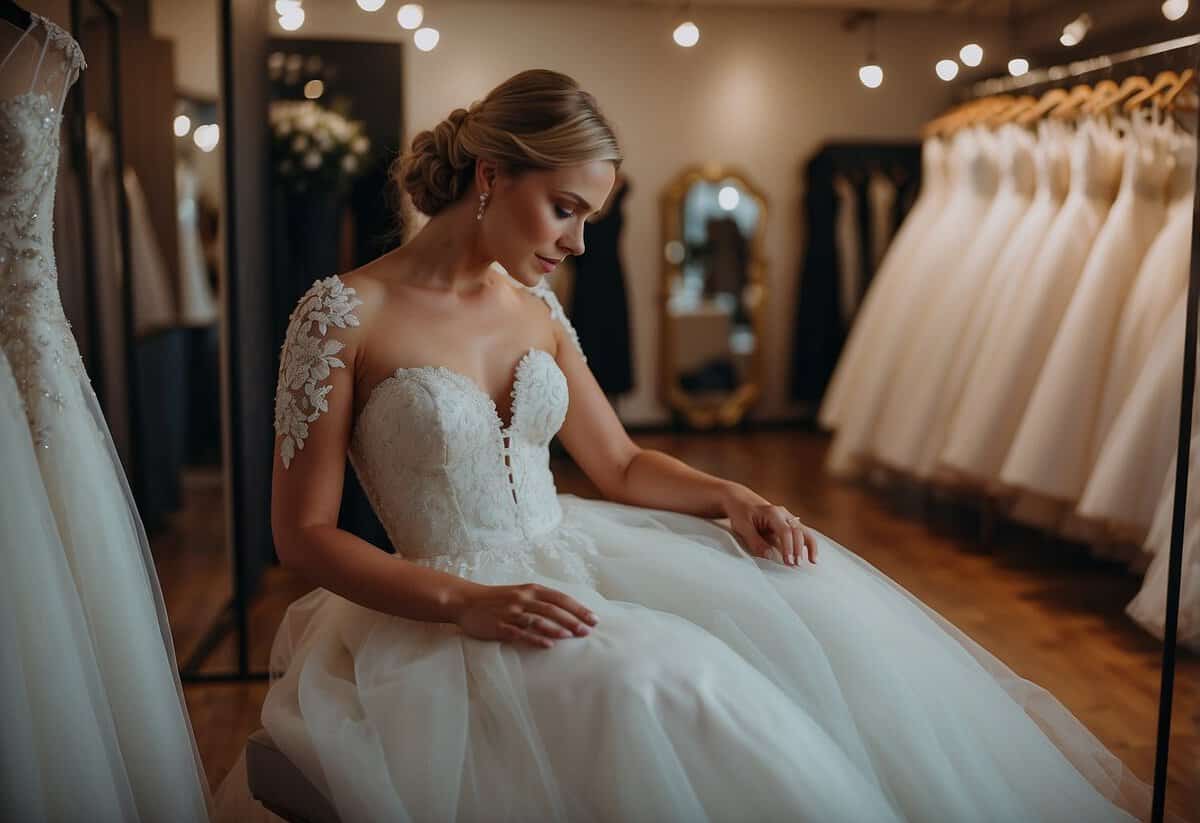
Eating before your appointment and packing the right essentials can make the experience much smoother. It’s also crucial to know your budget and research bridal boutiques beforehand.
Setting a Budget
Before you even step into a bridal boutique, figure out how much you are willing to spend on your dress. Write down your budget and stick to it. This helps you avoid overspending and narrows down your choices.
Keep in mind that your budget should include alterations, taxes, and any accessories you might need like veils or shoes. Factor these costs in early on so there are no surprises later. Ask if the boutique offers any package deals that include multiple services for one price.
Researching Bridal Boutiques
Not every bridal boutique will have what you are looking for. Research boutiques in your area and see what styles they carry. Read reviews online and check their social media pages to get a sense of their reputation and the designers they stock.
Call ahead and book an appointment. Many boutiques require this, and it ensures you get one-on-one time with a stylist. If certain friends or family members are accompanying you, ask them about their availability to choose a time that works for everyone.
Choosing the Right Undergarments
What you wear underneath your dress can make a big difference in how it fits. Bring a strapless bra, seamless underwear, and possibly a shaper if you plan to use one on your wedding day. These items help give you a proper fit and show how the dress will look on your big day.
Some bridal boutiques may provide bras or shapers, but it is better to bring your own. This ensures you are comfortable and you know exactly how your dress will look and feel. Don’t forget comfortable shoes as you may be standing for a long time during your appointment.
Final Fitting and Alterations
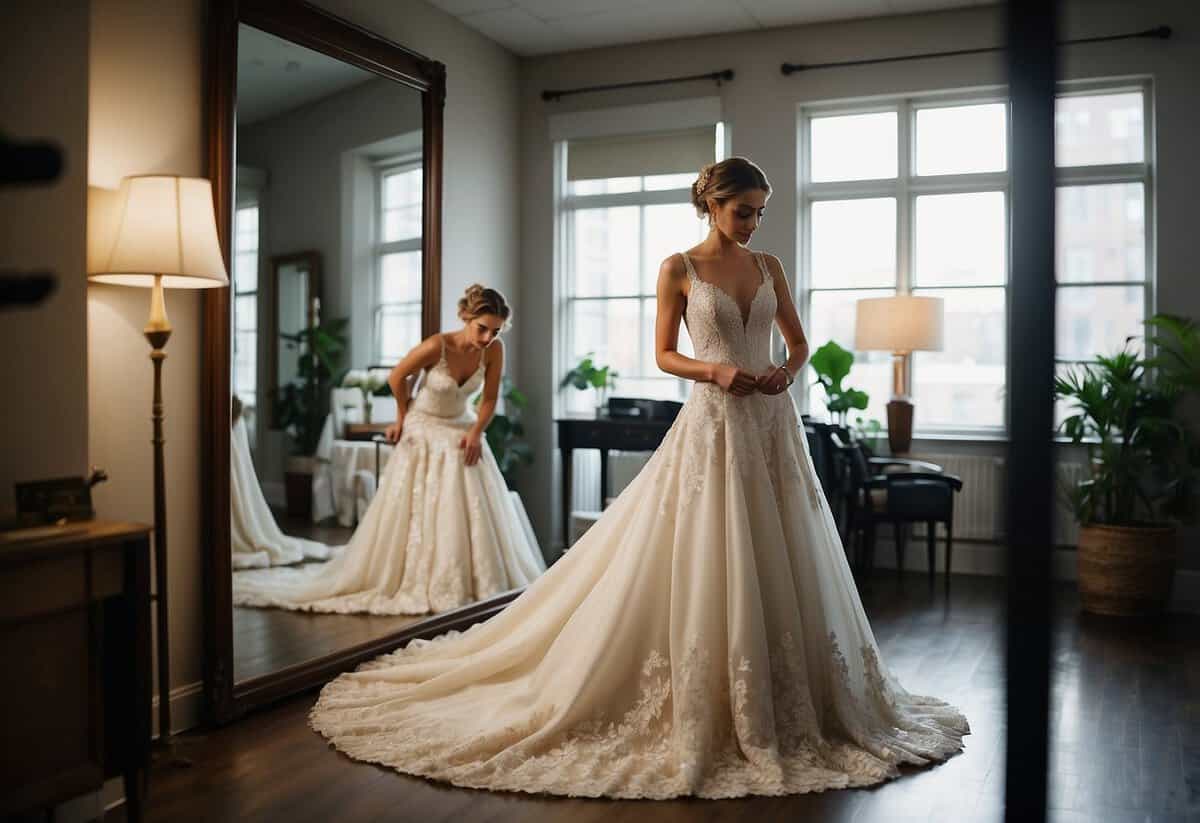
The final fitting and alterations are crucial to making sure your wedding dress fits perfectly and complements your body shape. Scheduling your fittings and knowing common alterations will help you be prepared.
Scheduling Your Fittings
You should plan multiple dress fittings to ensure a perfect fit on your big day. Usually, three fittings are recommended. The first fitting should be scheduled at least three months before your wedding. This allows time for major adjustments if needed.
The second fitting is about a month before the wedding. This is the time to fine-tune the changes made after the first fitting. The third and final fitting is around one to two weeks before the wedding. It ensures that no last-minute adjustments are needed. Make sure to bring the undergarments and shoes you plan to wear to each fitting.
Common Alterations
Common alterations include hemming, taking in or letting out the sides, and adjusting straps or sleeves. Hemming ensures your dress is the perfect length, while taking in or letting out the sides makes sure it fits snugly without being too tight.
Other adjustments might include adding bustle buttons for the train, which makes it easier to move around during the reception. You might also need padding or cups sewn into the bodice for extra support.
Keep these common alterations in mind to achieve a flawless look that fits you perfectly. Always work with experienced seamstresses or alterations specialists to get the best results.



